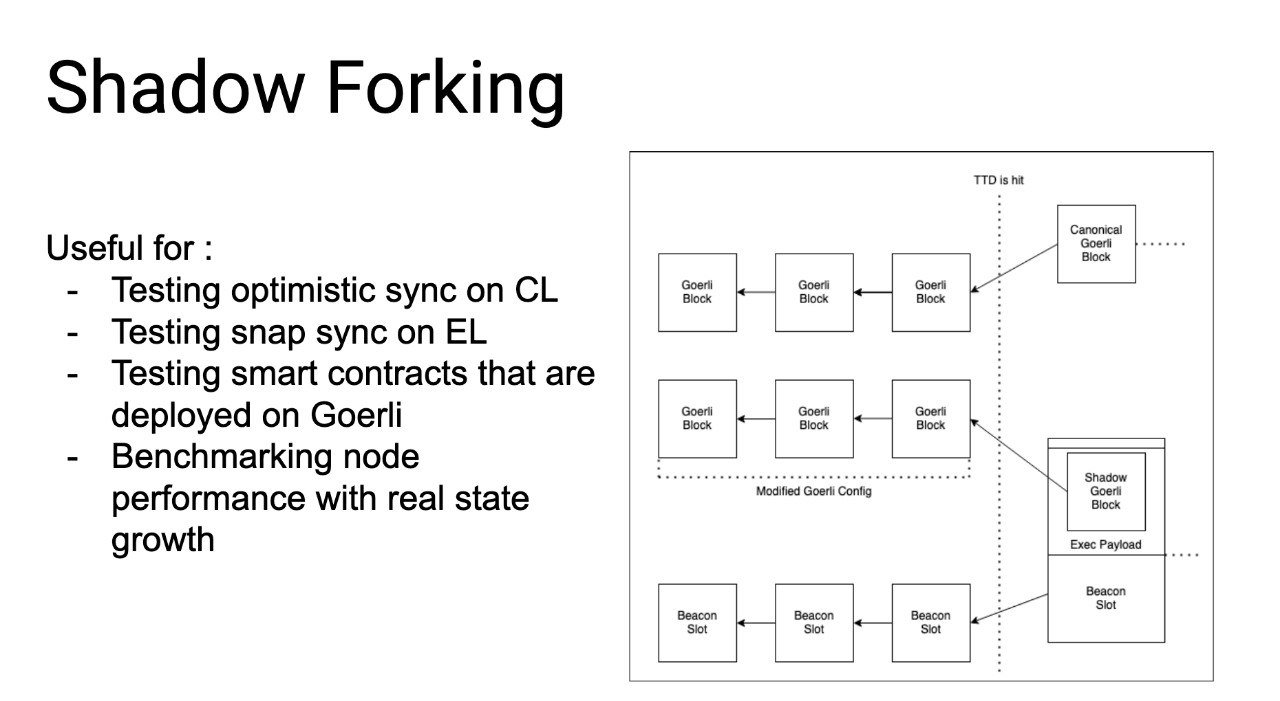Goerli, a long running and established testnet used by devs for years to try out their dapps and other ethereum projects, is hours away from upgrading to full Proof of Stake (PoS).
Parithosh Jayanthi, a developer at the Ethereum Foundation, explained that Goerli’s beaconchain has undergone genesis at 9AM UTC on the 23rd of March.
The full merge was initially expected to happen at around 3PM UTC today, but according to Marius Van Der Wijden, another eth developer, there was a mistake in calculations so the merge will happen at around 1AM UTC.
“The aim of the testnet is not to test the transition explicitly, but rather to provide a sync target for testing over the next weeks and to benchmark performance,” Jayanthi says. “We’re additionally testing a mainnet client split. It is not meant for the general public, but if you’re so inclined then feel free to join us, there won’t be any official guides written.”
The merge will happen through a shadow fork, which we haven’t quite come across before in ethereum.
“We will gossip transactions to-from the main goerli chain. So while transactions on the fork shouldn’t reach the canonical chain, they still might find a route – be prudent in spending your goerli ether,” Jayanthi says.
The Goerli testnet is so in use that Twitter is full of people begging for free goerli eth as many faucets don’t seem to be working.
Some frustrated users even stated they’ll go and buy some goerli, making this one of the biggest upgrade prior to the live launch.

In explaining further what a shadow fork is, Wijden says:
“We sync el nodes (merge clients) on the normal chain, and deploy a deposit contract with all the validators that we want.
Then we set the ttd on our nodes. Our nodes will see if ttd is hit and tell our cl nodes. Our cl nodes will start creating the PoS chain.
The normal chain will just move on, basically as if not enough miners updated their nodes.
We’ve seen on our last shadow fork that the two networks will stay connected, s.th. transactions from goerli will also be executed on our fork. Since they might be ordered differently, the state of the network will diverge over time.”
Pretty cool. One chain goes to full Proof of Stake and sort of discards the miners, the other chain keeps the miners, and so we have two identical networks at the point of genesis, which then diverge.
Which means we might see how the dapps and everything else running on Goerli is mirrored on the new PoS chain.
Giving some potential practice for the live upgrade where the Proof of Work chain may be kept running by some as a backup, although in a far cleaner way as the full PoS network won’t reflect PoW blocks as far as we are aware.
A gigantic airdrop may well be one incentive to do such chain-split in the livenet, but that will only have value due to the numerous potential intellectual reasons, including that some may well see Proof of Work as more secure, or more egalitarian in that you can get eth from the network directly, instead of having only the choice of getting it from someone that has eth, as well as plenty of other potential reasons.
For some they may not be good reasons, but ETC has already spiked and so the question may well be does some value go to a very old and an anti-eth network, in ETC, or to one where all current ethereans can share the value, a ‘new’ PoW chain that just keeps on running which we call PET, ostensibly for Proof of Work eth and also because its primary value is as a backup just in case something goes wrong, a pet.
So making this Goerli merge interesting in itself, while also showing Proof of Stake is becoming very real in eth after years and years of research and battles with all the maths that now makes this possible.
 trustnodes.com
trustnodes.com